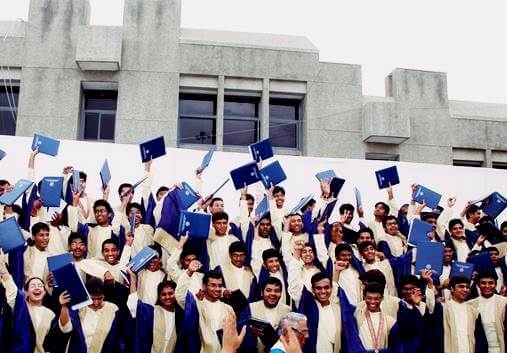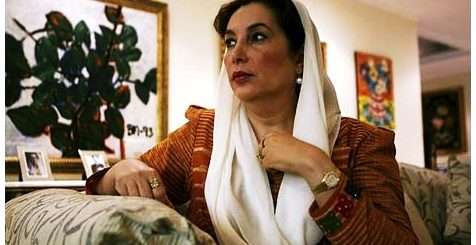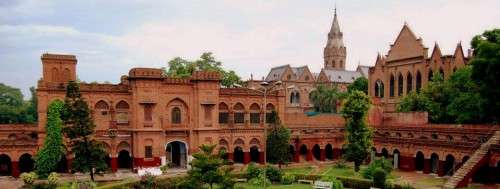A Way Beyond Failed S&T Policies – By I. Daudpota
[The article reviews how national institutions have failed to present a viable vision for the country’s S&T sector. Conscientious professionals need to propound their ideas and reach out to the public. An increased role of expat. Pakistanis is suggested.]
Among teachers and science and technology workers, the nonchalant attitude of successive governments to knowledge acquisition and science and technology (S&T) is an accepted fact. The apathy is evident in the quality of the ministerial and top bureaucratic appointments in these areas. It is easy to fault the government, but what have these grudging workers done themselves? Haven’t they generally failed to provide innovative, practical ideas suitable for implementation, and lacked a commitment to engender a local change, well within their own domains? Blaming the government, instead of taking a personal initiative is where things invariably end. Public institutions have crumbled partly due to lack of funds; an important reason for their decline has been their listless, insipid leadership and workers, and the overall lack of internal and external monitoring, evaluation and accountability. These includes premier institutions such as PAEC, Kahuta Labs, PCSIR and the military.
With external pressure to reduce public expenditure, non- productive jobs are being reduced through golden handshakes. The fear is that many of the relatively useful workers will take the lucrative offer and depart, leaving their incompetent colleagues behind in their old jobs. The hastily formulated down-sizing scheme, like the successive education and S&T policies will fail to give new life to these institutions. Only a thorough analysis of the causes of past failures, their rectification through a swift accountability process, the formulation of realistic policy for the future bolstered by a new political will and the consensus of the major political parties, can lead to success. Massive down-sizing, long overdue, will no doubt be essential, but it cannot be an end in itself. The four examples below from different periods illustrate the failure to plan judiciously. There is a myth going around, perhaps propagated by the friends of our planners, that they make wonderful strategies, and it is only the implementation that lets us down. Hopefully these facts will put paid to these delusions.
S&T Scholarship Programme
When Mr Mahbub-ul Haq held sway in the 1980s, he instituted a plan for overseas training in S&T. Many hundreds of students were sent abroad and an estimated 40-60 % have returned home. It is not clear, though, how many are using the skills they learnt overseas. Very broad general subject areas were defined and an eligible student who obtained admission in a foreign university department usually got a government S&T scholarship. National institutions which promised to employ these person after their training, reneged when the time came, according to Dr M.D. Shami, former head of the Pakistan Science Foundation. Such top-down development instruments, not backed by proper planning and wise implementation are bound to fail. Without sufficient guidance and focus provided by the government or the national institutions, which were supposed to employ them on their return, these students sought the easy way out generally. They became glorified slaves to their Ph.D. supervisors, working in areas with little or no relevance to their possible employment at home. A sandwich programme, with joint supervision of the institution in Pakistan and the foreign thesis advisor was essential for success. A well defined thesis project with a component of it to be carried out in Pakistan, extensive course work (as required in US universities), and significant input and monitoring by the home institution, should have been essential components of this plan. Had this programme been monitored and evaluated continually by a body independent of the Ministry of S&T many of its short-comings could have been corrected. Wishful thinking that often accompanies the attitude of throwing money at a problem, marred this otherwise excellent basic idea. The bureaucrats in the Ministry of Science and Technology and the leaders of R&D organizations just lacked the managerial and intellectual capability to supervise such a large scheme.
PM’s High Level Commission for S&T
This commission was supported by the World Bank but used national experts. It recommended the formation of a small standing committee of distinguished experts to advise the PM directly. Above all it asked for a political commitment for S&T. Most of the top bureaucrats and heads of S&T organizations, who formed part of this commission, have a vested interest in maintaining a system that has helped them personally. It is naive to expect them to formulate a wide-ranging structural reform. Some Commission members blatantly refused to permit organizational reforms, particularly of those from which their own organization received funds. The voices from the private sectors in technical areas were welcome but their suggestions for transforming institutions structurally were drowned in the din of public sector representatives. Although over 300 experts’ views were solicited, and considerable time and effort expended, this exercise in “democratic” decision- making failed even at the policy formulation level resulting in many watered-down recommendations and others which were arrived at with undue haste. No inputs were sought from the Ministry of Finance or from politicians. This fairly comprehensive report did not get presented to any committee of parliament or senate. Copies were however sent to leading members of the opposition (now in power) and members of the interim government. The PML government has not bothered to consider it. The fact is that it was probably not even read by the last PM — the person who commissioned the report. It just died a quiet death, abetted to an extent by the Ministry of S&T which perhaps felt left out.
Ninth Five-Year Plan
The mandate of this group was to give recommendations for S&T programmes and their budget. The Eight Plan recommended an expenditure of Rs 5 billion on S&T but by June 1998 it is expected that only Rs 1.3 billion will be released by the Ministry of Finance. This is only 0.01% of Pakistan’s GNP, while UNESCO recommend a minimum of 1%. Apparently oblivious of the realities of the terrifying financial straits of the country and the lack of political will, it recommended Rs 60 billion for the next five years — a twelve- fold increase over the last plan. Yet another example of a wishful thinking? If this amount were to appear by some miracle, our institutions, lacking adequate absorptive capacity, would only end up wasting it. This is not to say that with genuine political will and a new visionary leadership in S&T organizations willing to take tough decisions based on well-discussed plans, the UNESCO target cannot be achieved. But these are too many ifs! Under prevailing conditions the proposed amount would be like giving a totally dehydrated person a gallon of water instantaneously. That would do more harm than good!
World Bank Higher Education Policy
In the late 1980s the government invited the World Bank to survey the higher education scene in Pakistan and present a blue-print for reform. Their excellent two volume report gave a comprehensive reform plan which emphasized vocational training, return to using merit for admission to universities and colleges through the use of a national testing service, encouragement of the private sector to contribute, and many such good ideas. It was more than the government could swallow. The Education Minister in the early 1990s, limped along with this plan unable to push for it acceptance within the bureaucracy and the government. Endless meetings in the University Grants Commission with university official and staff failed too, mainly because such a plan would have reduced the nuisance value of the present controllers of these institutes of higher learning. Even if the single very important recommendation from this plan, the national testing scheme, was implemented in the private sector, better students would be entering our universities and colleges today.
If plans mean more than mere wish lists, they should take into account the existing economical and political reality. Past and current planners must therefore take the blame for spouting unrealistic ideas that look attractive to the unwary. The process of planning should actively involve implementers and parliamentarians from all sides. This does not however mean having extensive round-table meetings, which invariably waste time. Instead, experts who formulate policy should regularly brief the parliamentary committees, reach out to the public through the media — also directly — and be open to the feedback received.
The Plight of National Institutions
National S&T organizations have failed to present a practical vision and lobbied successfully for its implementation. Take the example of the Pakistan Academy of Science (PAS) which, unlike the National Academy of Science in the US, has been totally ineffective in propounding an appropriate S&T policy for the country. Its lethargic membership, comprised mainly of senior (retired) scientists and administrators has also failed to develop a focal point for intellectual discourse on their subject. This is no surprise. Its recent excessive expenditure on totally transforming its office building, introduction of garish decorations and building a hostel, smack of ostentatiousness rather than a seriousness of purpose. A grant of Rs 10 million from an unidentified source to the Academy could help, but who will ensure that it too will not go towards cosmetics? The grand Pakistan Science Foundation (PSF) building is next door. Not as imposing as the new PM secretariat across the road, it has a wide mandate and should be the government’s main outfit for popularization of science and a think tank like it counterpart in the US, the National Science Foundation. It too has not been markedly successful in these areas. It has however done better than the nearby, non-descript Pakistan Council for Science & Technology (PCST), which was set up as the main advisory body on S&T policy for the government — a role it has never taken seriously. Mandated to monitor and evaluate the statistics relevant to S&T in the country, it has failed, not least because its staff lacks motivation and is inadequately qualified for the task.
The government needs new, objective inputs — different from what it presently gets from most of the leaders of public S&T and educational institutions. There are always a few outstanding individuals in these places; they need to be identified and encouraged to take an active role in matters of policy. In addition, there is a vast resource of untapped Pakistani ex- patriots who can be most useful. To date they have not been tried, and their services could be tapped at little cost. Those who prove their worth could be offered leadership positions (on contract) in the S&T organizations after most of the current incumbents are shown the exit door. Our S&T organizations need a new culture which such individuals can bring.
The Way Forward
National institutions look grim, and short of a revolution there seems little chance of progress. Is the future for S&T then totally hopeless? No, but for a transformation one needs a new “can-do” attitude among active scientists and technologists, science NGOs of which there are very few, and the good science writers. Until now they have looked at the government to become more receptive to their concerns. Instead they now need to rely on their own resources, however modest, to present an alternative vision through whatever means available. This can mean taking science to the people through talks at neighborhood schools, TV, newspapers and their workplace. [Kerala, India, is a good example of where such a strategy has being very successful.] Scientists should not rely only on journalists to carry their message. They will need to do this themselves. Scientists who are enthusiastic about popularization, but are not good communicators, should try and improve their skills. “A journalist cannot become a scientist, but a scientist can become a popularizer of the subject through the media” says Mr Laeeq Ahmed, the distinguished presenter of numerous TV science programme on TV. With sharpened skills of persuasion, persons such as Mr Laeeq, in league with prominent scientists, could get the government to give a lot more time to dubbed foreign science TV programmes at all levels — from the popular to the British Open University courses. These are excellent, easily available, and perhaps the British government could finance the acquistion of such educational material. Under the current electoral process, government representatives will not be selected on the basis of the importance they give to education and S&T — at least not in the foreseeable future. If this is agreed upon, then it is left to those privileged few with access to knowledge to stop complaining. They should lobby the parliament and, more importantly, reach out to the public. With time, those who are won over will begin to be more discriminating in casting their vote. Years of moaning has got scientists nowhere — it is now time for action!














